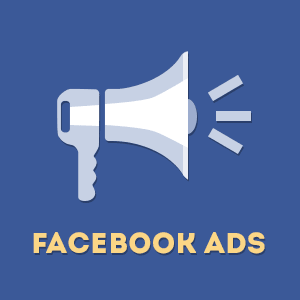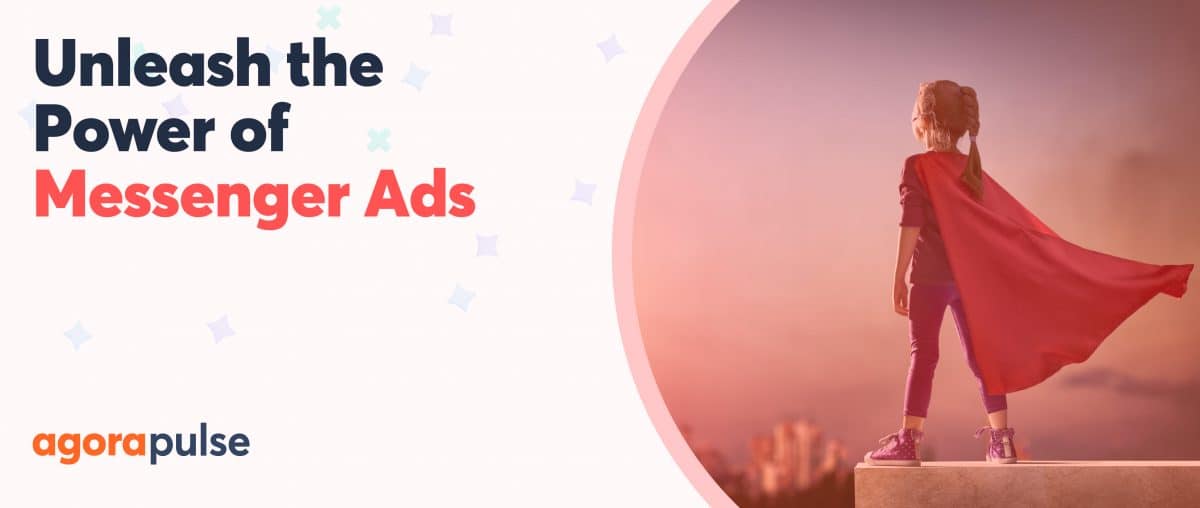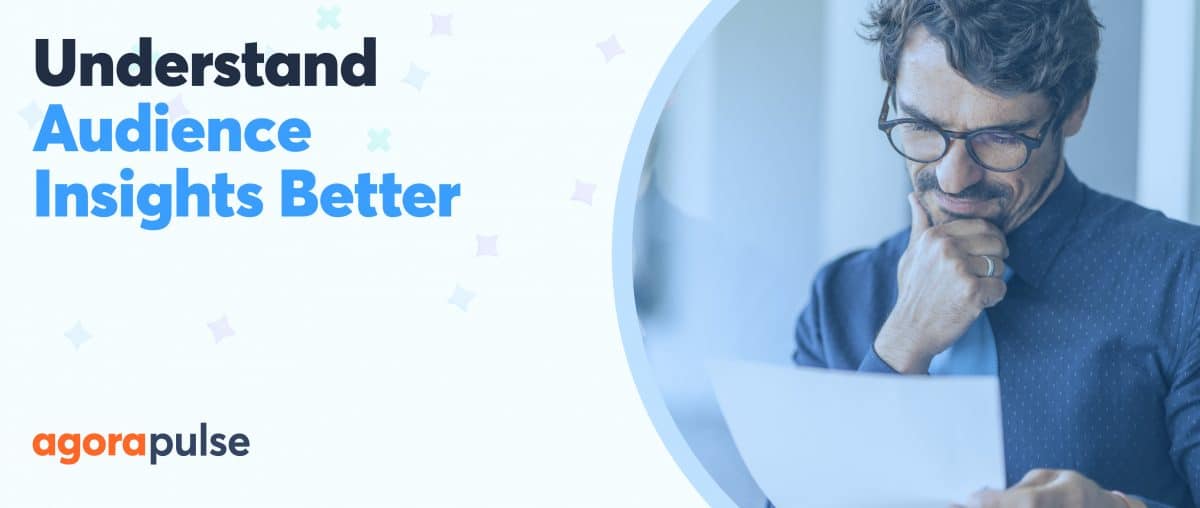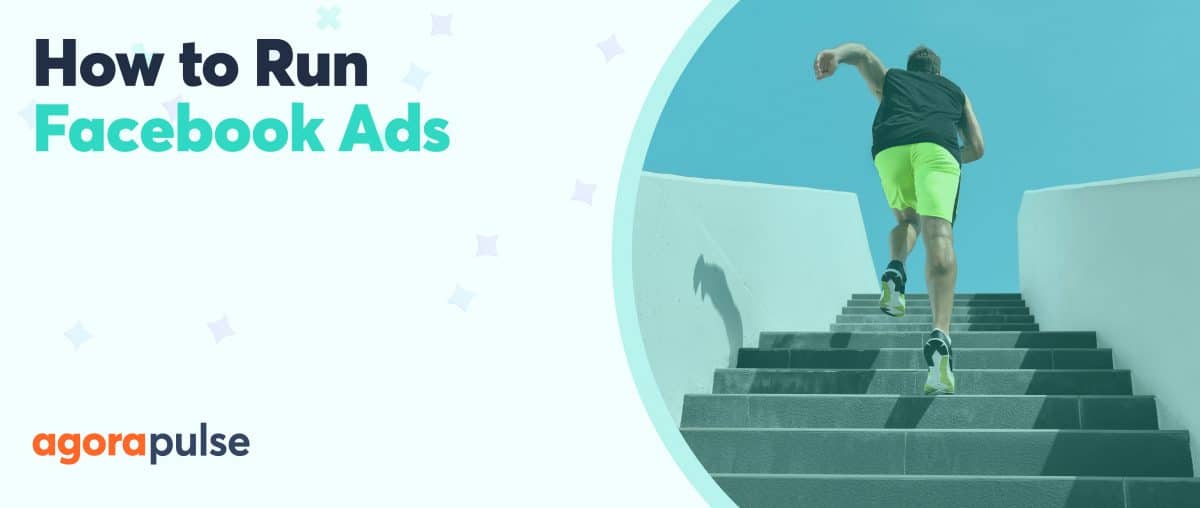A previous version of this article was initially guest posted on Social Media Examiner
It’s no small wonder Google and Facebook are reporting billions of dollars in profit every quarter, in many cases online advertising can be the most effective way to scale the growth of your business.
As efficient as these two platforms can be, they’re growing more complex every week, requiring more knowledge and effort on your part.
The key to success is finding the best targeting options for your business.
On Adwords, this means finding the best keywords, on Facebook, it comes down to user profiles. After many hours of trial and error, and thousands of invested dollars, I’ve discovered that nothing is obvious, and everything requires testing.
I want to give you the benefit of my experience in order to lower your Facebook ads cost and quickly determine your ideal target audience on Facebook.
This article focuses on new client acquisition, not on retargeting. If you want to learn more on retargeting and how it can be done, read this article instead https://www.agorapulse.com/blog/setting-up-website-custom-audiences-facebook-retargeting
I also assume that you don’t have a huge fan base and will advertise mostly to non fans.
1° 4 tips to follow before you start
- o
-
Never sell to “cold leads”
Google adwords can lead you directly to hot prospects. Users who searched for “social media management tool” are most likely looking for one, so you can try to sell your awesome software right away without warming them up.
Facebook ads, however, do not target intent, they target users’ profiles. For example, you may target users who look like your clients but that doesn’t mean they are ready to buy. In fact, most of them are probably aren’t. Advertising your product to most of these people will likely be a waste of money.
In order to artificially create this “intent” targeting with Facebook, you’ll first need to advertise something that qualifies the audience’s intent, and then retarget those who have clicked on the first ad with a sales ad. You can use various strategies for this first “intent qualification” campaign: a free ebook, blog content, a free tool, reviews, etc. You’ll just have to figure out which type of message / content gets you the most qualified leads to retarget.
- o
-
You need a big audience
In order to optimize a Facebook ad campaign, especially with A/B testing, you need to have a large audience to target. A/B testing will not help you if you’re only targeting an audience of 5,000 people. You won’t have enough users to make you’re A/B test statistically relevant. As a rule of thumb, a minimum of 100,000 users is required. The bigger, the better.
- o
-
Track the entire funnel
When A/B testing an ad campaign, never rely on the results produced by the first step of your funnel, nor the second step. You must test the entire funnel, till the end.
If you only measure the click-through rate (CTR) and its associated cost per click (CPC), or even the CTR against lead conversion rate, you face a 1:2 chance of relying on highly misleading data. Then, there’s your end result- revenue, average purchase, lifetime value… you’ll need to make sure you measure these too.
Too often, marketers get stuck at the CTR, CPC or lead conversion to optimize their Facebook ads. They twist their visuals to get more clicks, test some colored border and, at the end of the day, spend a lot of time optimizing things that will have no impact on the bottom line, or worse, have a negative impact.
Sometimes, a lower CTR and higher CPC can lead to a higher revenue or lifetime value just because your ad attracted the “right” user. As there are less “right” users, CTR will be lower and CPC higher, but every step after that will look much better.
The example below is a very good illustration. We’ve conducted an A/B test on 3 variations of the same call to action. If you just look at the surface (clicks and lead conversions), neither of the 2 alternatives beat the original. But when you dig deeper in the funnel and look at the lifetime value and churn rate in terms of revenue, the second variation beats the original by a far!
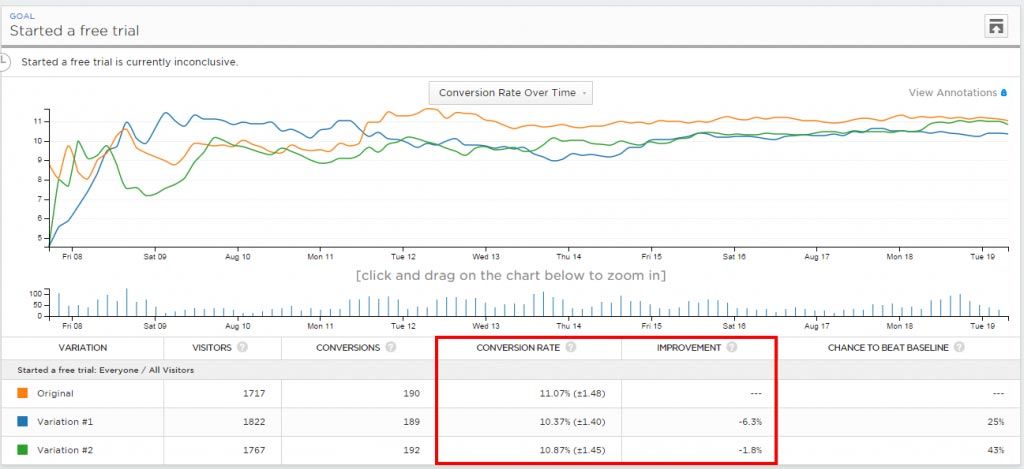
Looking at the lead conversion rate for this A/B test was inconclusive. The difference between the 3 variations was not significant enough.

But when we looked at the entire funnel (not just the lead conversion rate), there was clearly a winner in terms of churn and lifetime value, one of the variations leading to a much higher lifetime value.
- o
-
Tools you’ll need to conduct an efficient A/B test for your Facebook ads
You’ll need to use Facebook Power Editor, not the regular ad manager. Only Power Editor will allow you to track more than one conversion pixel. And to test ads, you need to be able to track both leads (free trials, add to cart, email subscribers, etc.) and new clients (subscription started, product purchased, etc.). If you only track one, you’ll miss at least half of the picture, and it may be the most important half.
Then, you’ll need to have all the tracking tools in place. The Facebook conversion pixels must be installed on your website, Google Analytics must be set up right, with both goal tracking (to track the number of conversions) and e-commerce integration (to track the revenue generated). And finally, as Google Analytics is not always enough, especially if you are in a subscription business, you need another analytics tool in place, such as Kissmetrics or Mixpanel.
I know, it sounds overwhelming, and to some extent, it is. Getting all that done right took me months. But if you don’t, you’re blind, and if you’re blind, you’re probably wasting most of your advertising budget. And that is not sustainable.
Finally, to really A/B test all the elements of your Facebook ads, you can rely on Facebook ads reporting, but this is tough. You have to export your reports into Excel and spend a significant amount of time digging into raw data to find the gems.
I’ve recently discovered Adespresso, an affordable tool that makes A/B testing Facebook ads super easy and very efficient, I highly recommend you to give it a try.
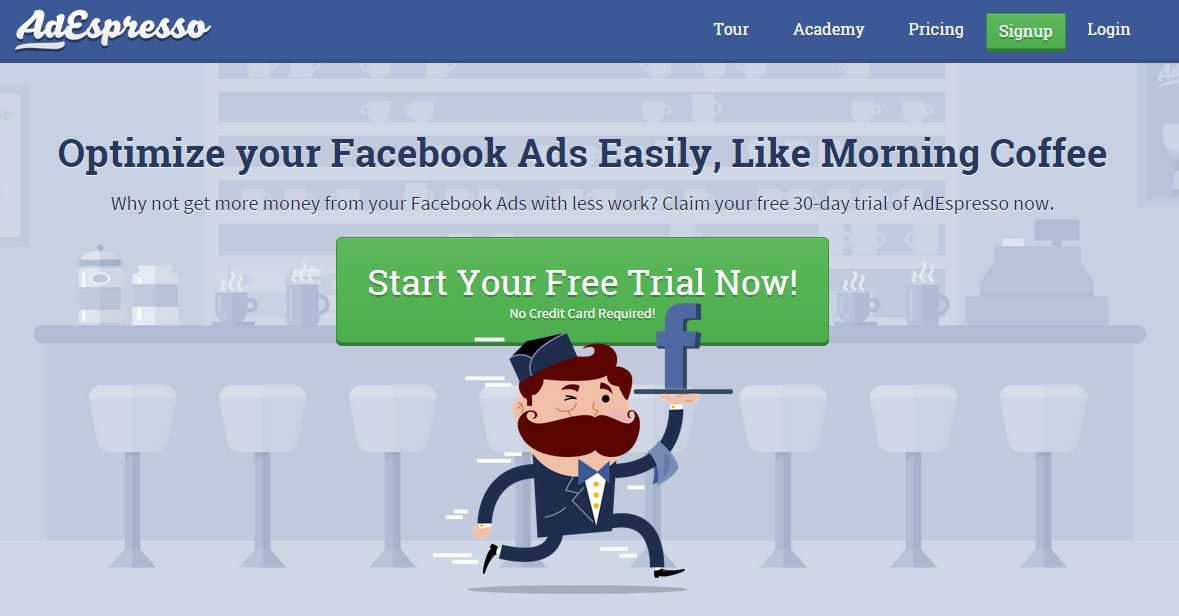
Adespresso makes it very easy to create A/B tests on your Facebook ads and identify the winning combination.
Adespresso also has an extensive experience in A/B testing on Facebook and can provide very valuable insights. For example, they recently shared with me the list of items that statistically had the most impact on all A/B tests conducted on their platform. Here’s the list, ranked from the item having the highest impact to the one having the lowest impact:
1. countries
2. precise interests
3. images
4. user OS
5. age range
6. genders
6. broad categories
7. titles
8. cities
9. user device
10. body copy
11. sexual preference (interested in)
12. relationship statuses
13. regions
14. education
15. language
That list is definitely not applicable to every A/B test, but as a rule of thumb, you can estimate that you’ll have more insightful results if you A/B test a country or an interest than if you A/B test an education level or a language.
Now that the tools are in place and you’re ready to test, let’s get started.
2° All interests targeting options are not created equal
Whether or not you’re using interest targeting in connection with custom audiences or lookalike audiences, it’s always a good idea to test their effectiveness.
For example, I used to target interests like “facebook for business”, “social media marketing” social media marketing blogs such as Social Media Examiner or Mashable and several of our competitors.
When I started to A/B test these various interests against each other, I realized that their effectiveness was far from what I expected.
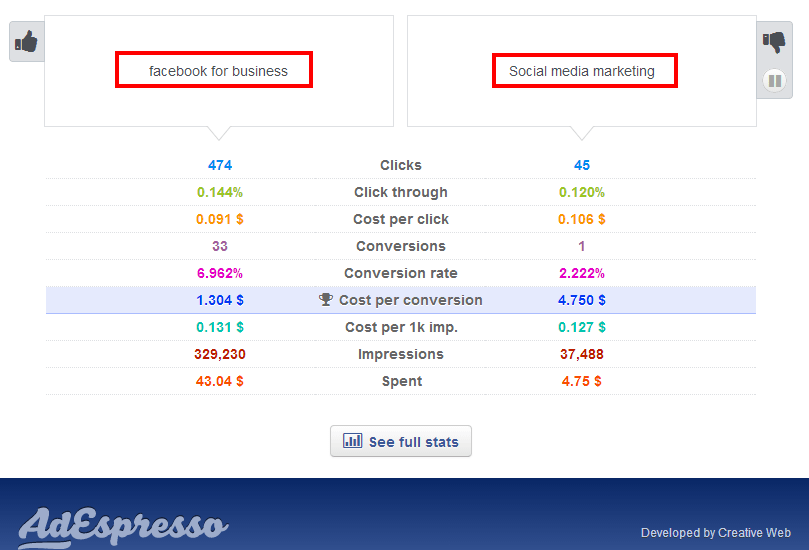
For that A/B test, it was very clear that targeting the “Facebook for business” interest was almost 4 times cheaper than targeting the “Social Media marketing” interest. A great way to test the effectiveness of various interests for your ads.
As these interests are even made of the fans of certain pages (Social Media Examiner for example) or made up by Facebook (Social Media Marketing for example), the quality of the user base they represent can be anywhere from high quality to very poor. You have no idea which ones will be a good fit for your business unless you A/B test.
Expert tip: Interests alone tend not to perform very well for me, and are usually quite expensive to target. The best option for me has always been to combine a lookalike audience based on a custom audience of existing clients together with a relevant interest.
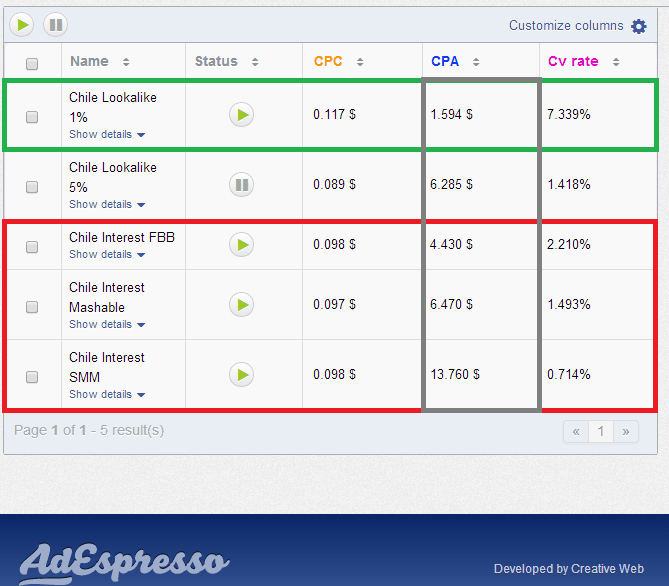
Lookalike with the highest similarity (1%) performed much better for us than lookalike with more reach (5%) and than all the interest we’ve tested. It was true for both the CPC and the conversion rate.
3° Men & Women- we’re all equal, but…
It’s 2014, right? Men and women should be equal in the workplace, and I was convinced that targeting a gender would provide no value.
I was wrong.
I started to dig into our Google Analytics accounts and realized that men were bringing us more overall revenue.

Based on our overall Google Analytics stats, men were converting more into paying customers and paying us more money. More than 60% more! That was enough of a sign to start A/B testing this criteria in our ads.
Maybe men have more access to the company’s credit card? Maybe they’re making the buying call more often when it comes to online software? I don’t know, but I did notice that men were less expensive to target.
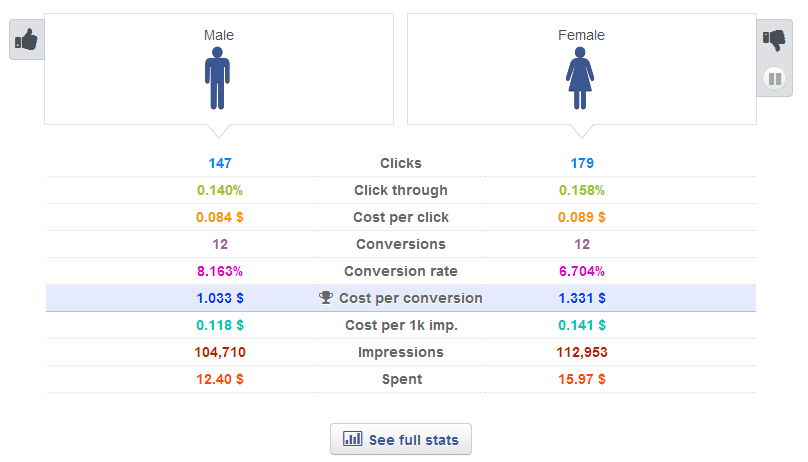
The A/B test on gender confirmed what our Google Analytics data told us: women were less likely to click and cost more on a per conversion basis.
At the end of the day, acquiring male leads is cheaper than women, and men will spend more at the end of the day. So every time I have a sufficiently big audience to target, I prioritize men over women, at least at first.
This is only valid if you have a large audience to target, if the audience is too small, splitting it in two will not be good idea. Also, this is true for my business (B2B marketing software as a service) but will definitely not be true in other industries.
4° Age matters
When I discovered the effect of gender on my advertising ROI, I decided to start testing on age range as well. Something I had not been doing in the past.
The results were not surprising, but I was happy I did the test! People between 18 and 21 were clicking and testing our software a lot, but paying very little.
The magic age range that converted the most prospects into free trials, and the most free trials into paid clients was 22 – 45.
Above 45, I had very few trials and revenue.
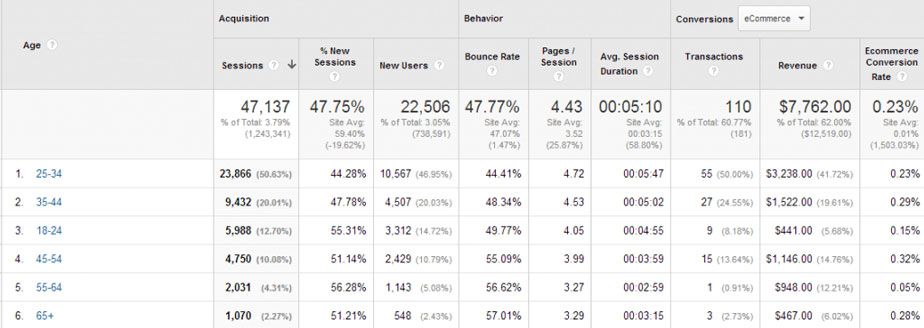
Google Anaytics to the rescue again with age ranges. It was clear that people below 24 were not paying a lot (but had a high free trial conversion rate!) and that the bulk of our revenue was coming from people between the age of 24 and 45.
Based on this finding, I started to focus on people aged between 22 and 45 only.
5° Not everyone speaks English
As I’m targeting prospects all over the globe, I advertise in countries where English is not the main language (South America, Europe, Eastern Europe, etc.). As we provide our service in 5 languages, I tend to localize all my marketing efforts, including ad copie and landing pages.
But, a couple of friends in Mexico and Argentina told me that our target users in these two countries would probably speak English and that everything in English may have a better image than an ad in Spanish.
So! I decided to A/B test this too! The exact same ad and corresponding landing page was served in both English and Spanish to a Mexican audience. And the result was crystal clear: it was much, much more expensive to acquire leads from the exact same audience in English than it was in their native language.
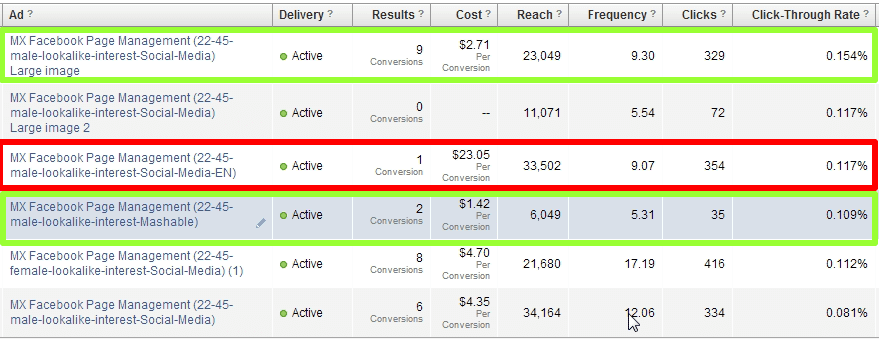
The ad highlighted in red was targeting a Mexican audience with an ad and landing page in English. The ads highlighted in green were targeting the same audience with the same ad and landing page, but in Spanish. The result speaks for itself.
Don’t take this example as a rule, I did the exact same test in Argentina with a different result. Just take into account that there will be cultural differences regarding foreign languages that are very different from one country to another.
6° Spend time optimizing your landing pages
This was probably one of the first things I learned: never send your advertising traffic to your home page. Never.
I’ve been reading this advice for years, and you probably have too. But take some time to click on the Facebook ads you see from players in your field and you’ll be amazed at how many of them are doing this. Even when the ad has a feature or value specific message, they still go to the home page, and the feature or value specific message is not there. This will usually end up in a wasted opportunity for the advertiser.
To give you a practical example of the effect of a dedicated landing page, we did a split test targeting users in Dubai, the same ad going alternatively to our home page and to a dedicated landing that simply said “managing Facebook pages in Dubai? You need [our tools]”. The result was very clear, the conversion cost was $6.5 on the home page and $3 on the dedicated landing page!
And based on other tests we’ve conducted, the gap is even bigger when the ad is specific to a feature or a value proposition that your home page will not clearly address.
Conclusion
Overall, after 3 months of intense A/B testing, and $15,000 spent on ads, we were able to reduce our lead acquisition cost by 66%. Yes, you read that well. Going after the same targets, the same countries selling the same product, a free trial user that would have cost us $6 3 months ago is now costing us $2. We do acquire a few less users, but the cost reduction is so drastic that we’re more than happy with that.
Your turn, have you already conducted A/B tests on your Facebook ads? Did you notice results you didn’t expect? Do you have a little trade secret you’d like to share about your success with Facebook ads? Thanks for sharing it with us!
